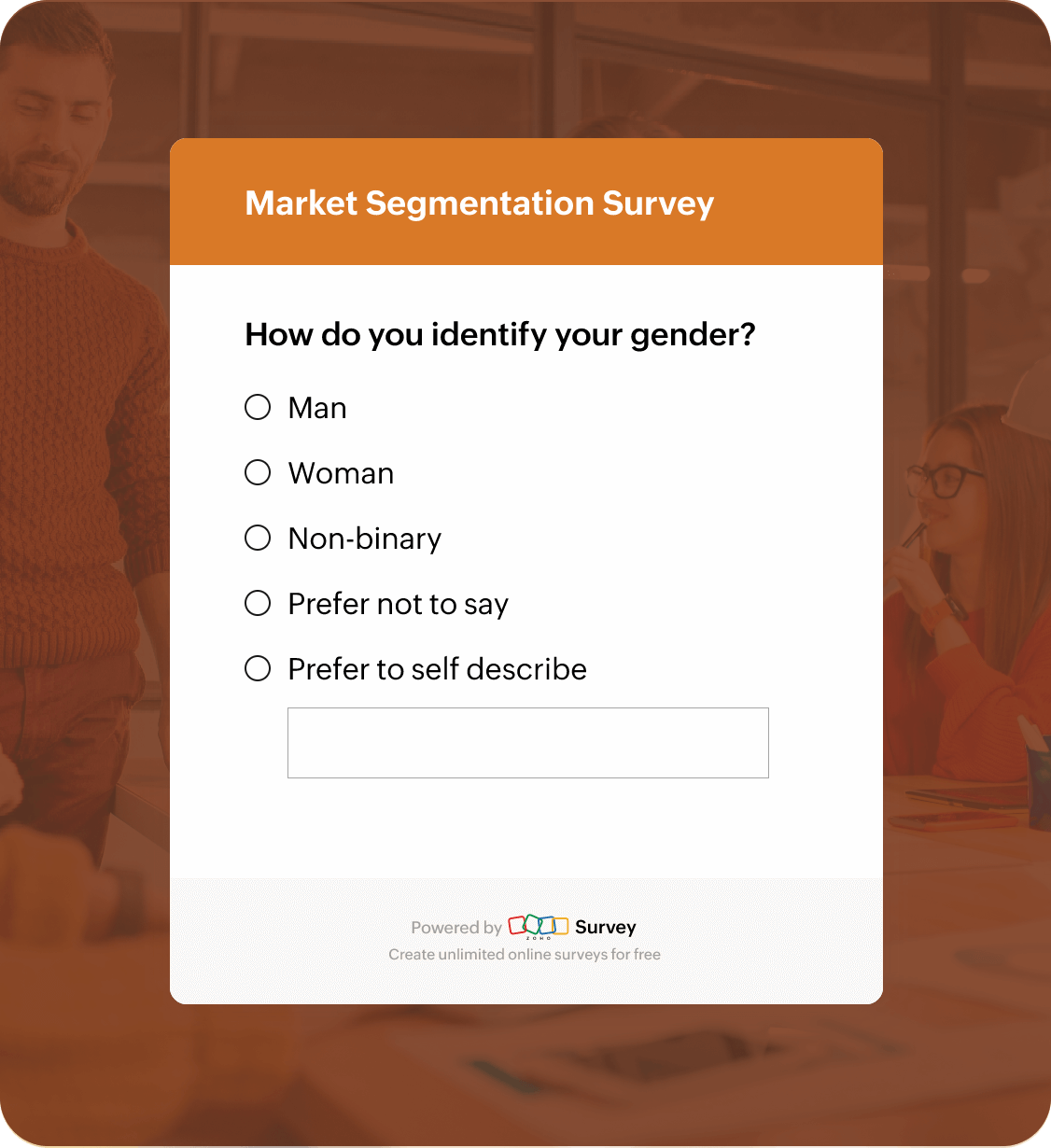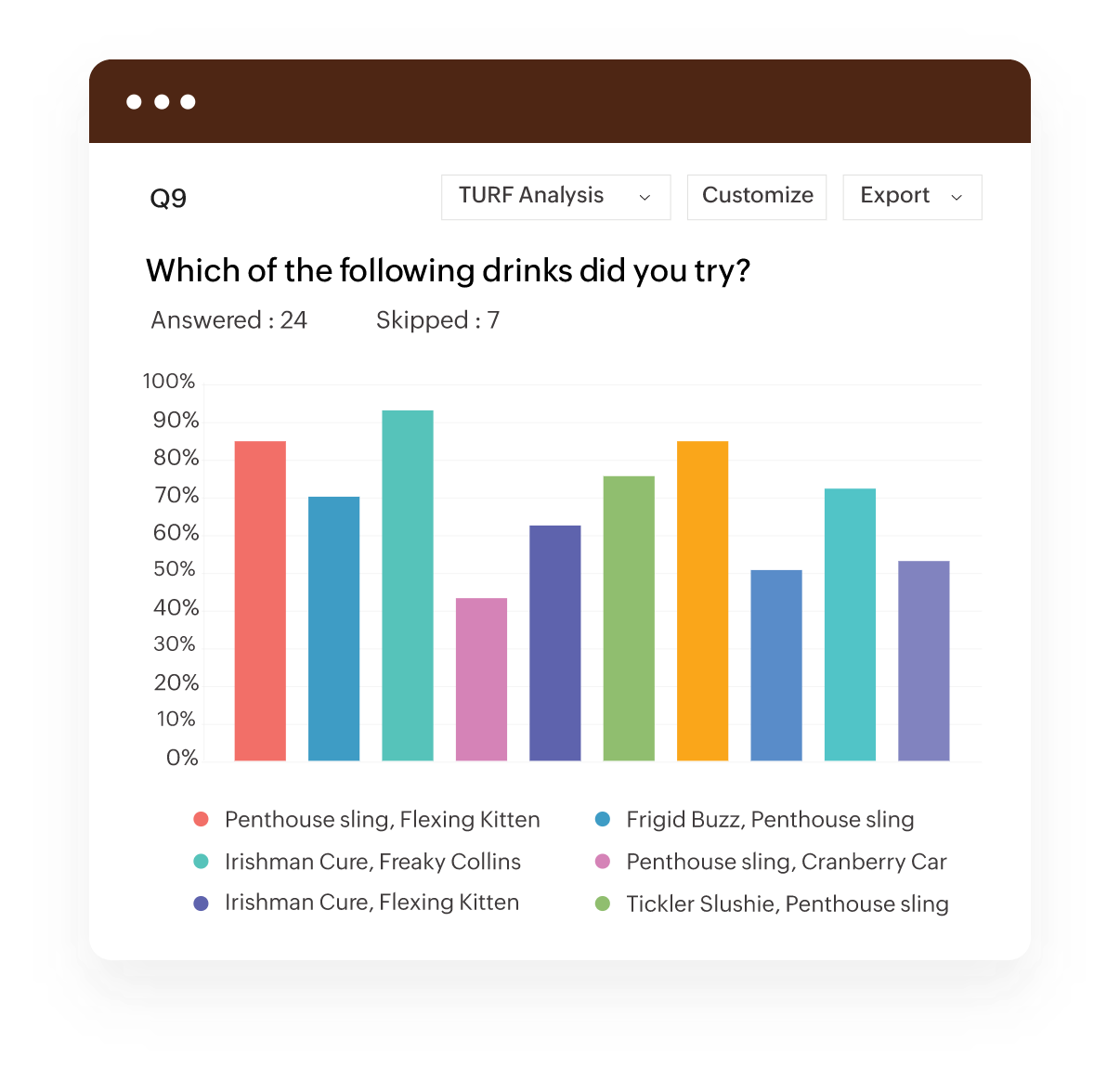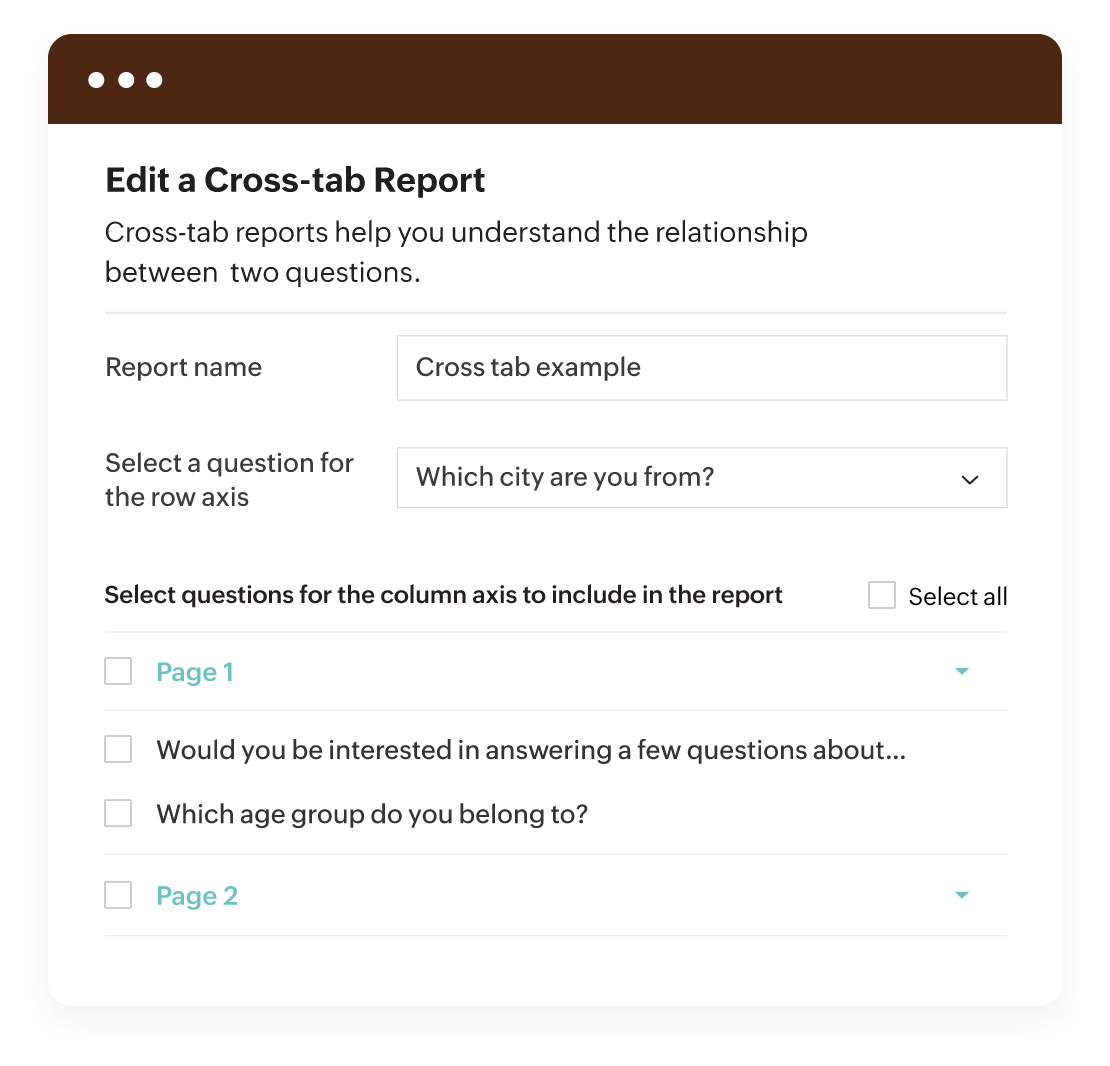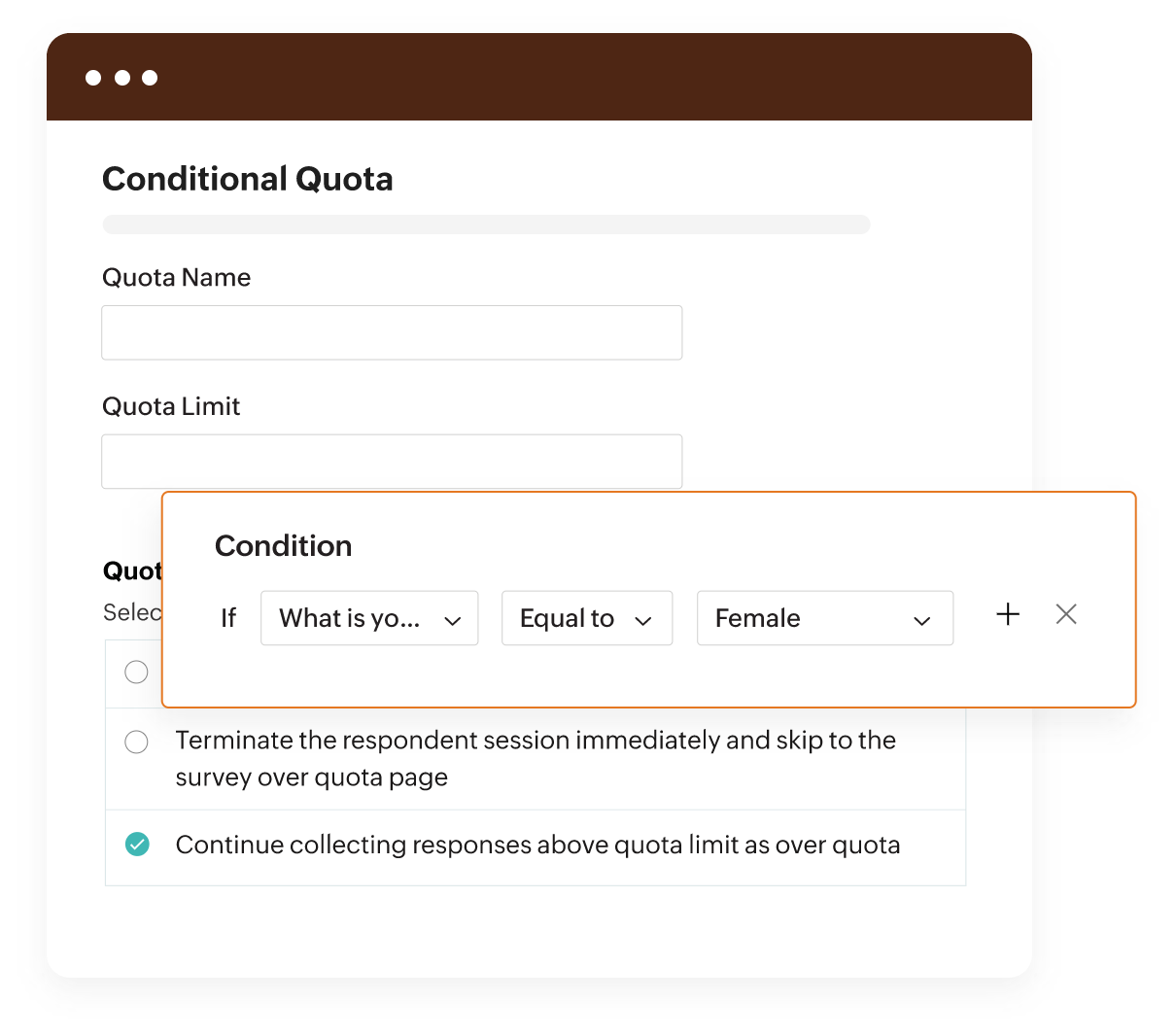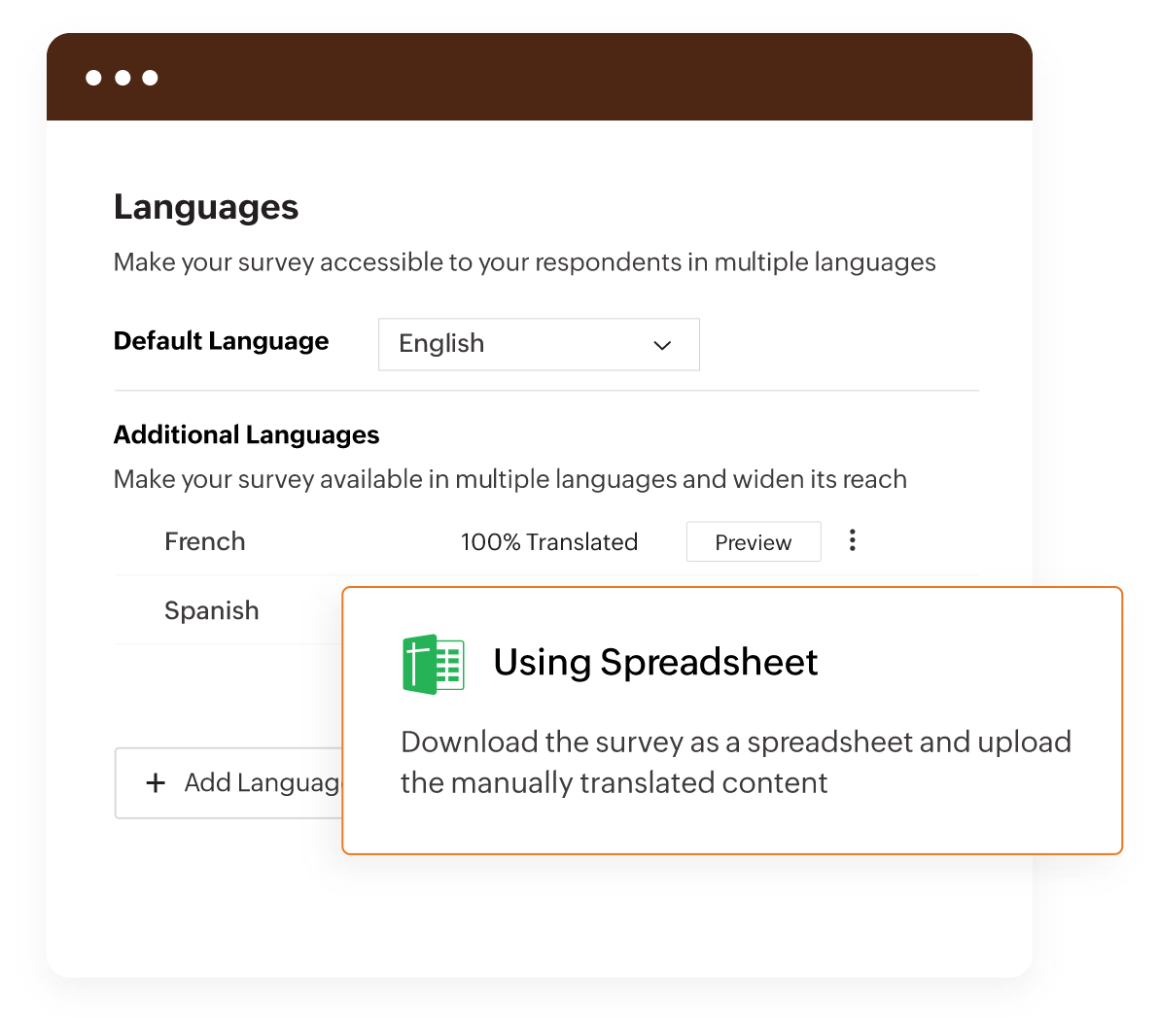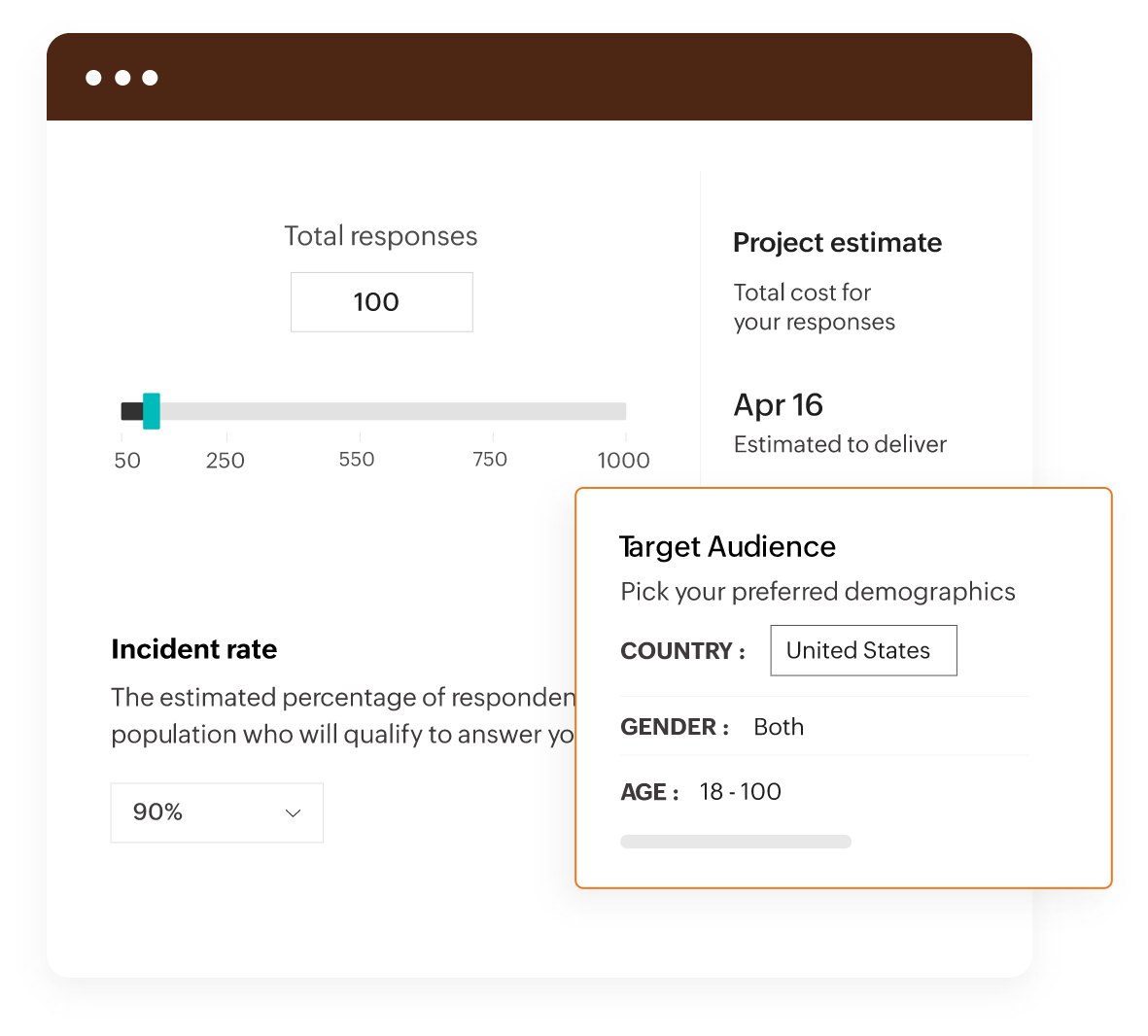Market Segmentation Survey
Segment your buyers into different groups for a more focused marketing approach. Create personalized marketing strategies, provide tailored services to customers, reduce costs, and identify the best channels for reaching your customers, achieving higher customer retention, and increasing ROI.
Try this templateWhy is market segmentation important?
Segmenting your audience demographically or geographically will help you narrow down your audience and approach them with specific marketing strategies. This will help you get greater ROI for lesser costs.
Market Segmentation Survey
10
3200+
1min
Segment your ecommerce customers to develop narrow marketing strategies
This template will help you segment your audience demographically, geographically, and behaviorally, and group together people who react similarly to certain products or services.

Segment your audience demographically
The need for certain products/services varies based on a consumer’s age, gender, ethnicity, annual income, and industry. Classifying your target audience based on these criteria can help you market relevant products to them.
Examples :
- Printed t-shirts might be more appealing to age groups between 18-25 than 45-60.
- Clothing and fashion accessories for men and women might differ.
- Luxury watches are more likely to be purchased by people nearing retirement age or by people with disposable income, rather than college students.
Segment your audience geographically
Your target customers come from different parts of the world and their needs and preferences differ accordingly. Segment your audience based on their continent or country, or narrow them down to specific localities or states.
Examples :
- A winter apparel company might be more appealing to people living in cold climates than those in tropical climates.
- Food and ingredient preferences might vary in different localities.
- A sporting goods manufacturing company might showcase baseball or cricket apparel, based on the popularity of the sport in a given country.
Segment your audience behaviorally
What customers say is often different from what they do. Behavioral questions can reveal the emotional factors behind a person’s buying decisions, which can help you cater to them accordingly.
Examples :
- Willingness to buy might depend on a shopper's familiarity with the ecommerce store, or on their familiarity with the brand.
- Some consumers don't mind paying extra for faster delivery, whereas others do.
- People have different preferred modes of payment, and it can influence a buying decision.
Frequently asked questions
1. Why is market segmentation important?
Market segmentation helps you:
- Show relevant content/products: By offering products/services that are relevant to your customers, you can increase retention.
- Create personalized marketing strategies: You can craft your advertising and marketing campaigns for specific groups instead of mass targeting.
- Budget effectively: When you narrow down your audience and use your resources effectively, you'll be able to cut down on costs and reduce risks.
- Develop new product ideas: By demographically segmenting your audience, you will learn about the needs of audiences in specific regions, which will give rise to new ideas and initiatives.
2. What is an example of behavioral segmentation?
Coca-Cola shows its customers products that are relevant to them. For example, Diet Coke and Coke Zero are targeted towards customers that are health conscious. Derivatives, such as Sprite, are targeted towards college students who prefer a non-cola drink.
3. What is an example of geographical segmentation?
McDonald's crafts foods that are in line with the local cuisine of the region they're targeting. For example, McArabia, a sandwich made with Arabic ingredients, is popular in Arabic countries. McSpicy Paneer is a burger that is a favorite among Indians.
4. What is an example of demographic segmentation?
Omega, a luxury watch brand, targets customers in high income brackets and creates different advertisements for men and women.
